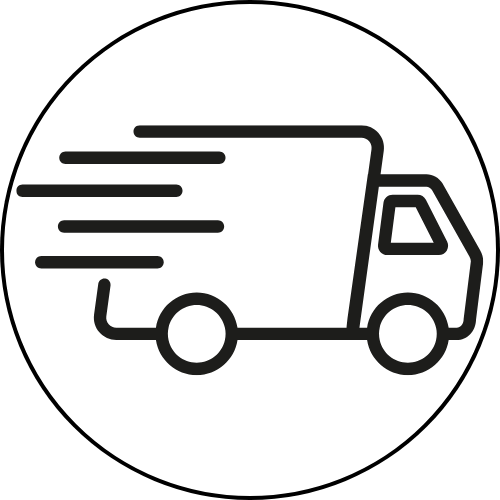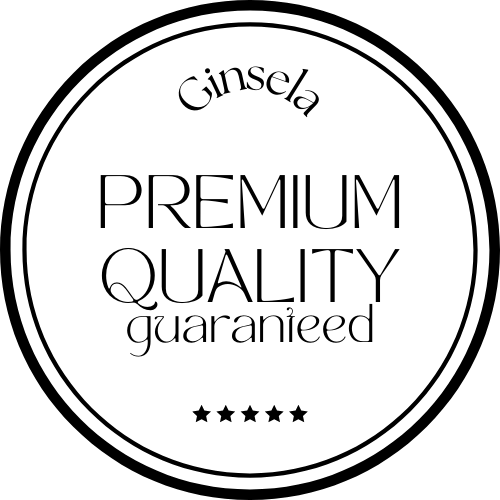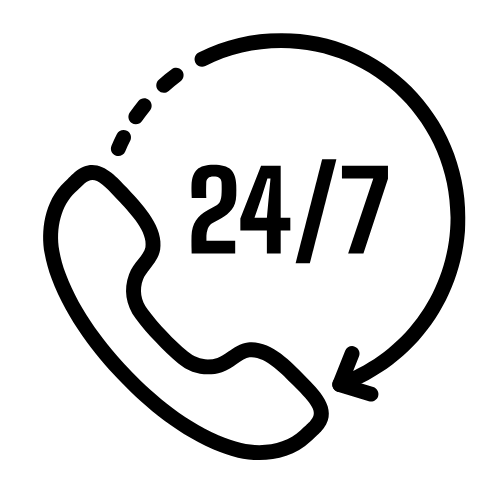TL;DR
If you menstruate, the Recommended Dietary Allowance (RDA) for iron is 18 mg/day (ages 19–50); pregnancy raises this to 27 mg/day, and lactation lowers it to 9 mg/day. For most, meeting the RDA through food—and improving absorption—supports hair and overall health. Clinicians often check serum ferritin (your iron stores) when shedding is persistent; WHO defines iron deficiency in healthy women at ferritin <15 µg/L, though some dermatology papers use ≤40 µg/L in hair-loss workups. Don’t self-supplement high doses: the tolerable upper intake level (UL) is 45 mg/day for adults. Food first; supplements only for lab-confirmed deficiency. Office of Dietary Supplements The Lancet JAAD
Story Beats (Narrative Arc)
Maira tracked every shampoo and serum but still saw more hair in the drain the week after her period. Her doctor asked one question: “How much iron do you get?” and ordered simple bloodwork—including ferritin. JAAD
Because Maira menstruates, her baseline requirement is 18 mg/day—yet breakfast was tea and toast, lunch often vegetarian without a vitamin-C partner, and dinner featured spinach but paired with chai (a known iron block). The labs showed low-normal ferritin. Office of Dietary Supplements PMC
She didn’t megadose pills. Instead, she rebuilt meals around heme iron twice a week, legumes + bell peppers on other days, moved tea/coffee 2 hours away from iron-rich meals, and added citrus to plant-iron plates. In 8–12 weeks, shedding eased; by 3–6 months, baby hairs framed her part. NCBI
Maira kept the food plan and added a light scalp routine to stay consistent—nutrition inside, gentle care outside. Progress became predictable, not mysterious.
1) Iron & Your Hair: What Matters (and Why)
Oxygen to follicles: Iron is critical for hemoglobin and cellular energy. Low iron shifts follicles toward telogen (rest/shedding); restoring iron helps eligible cases reverse that shift over months. Office of Dietary Supplements
Ferritin vs. hemoglobin: You can have low ferritin (depleted stores) without anemia—important when hair loss is the main complaint. WHO’s classic deficiency threshold in healthy women is <15 µg/L; several dermatology studies use ≤40 µg/L when evaluating female pattern hair loss or chronic shedding. Decisions should be individualized by your clinician. PMC The Lancet JAAD
2) How Much Iron Do You Need if You Menstruate?
RDA (19–50 years): 18 mg/day.
Pregnancy: 27 mg/day.
Lactation: 9 mg/day.
UL (maximum for adults): 45 mg/day from all sources (food + supplements). Exceeding this routinely can cause GI upset and, in extremes, iron overload. Office of Dietary Supplements +1
Key point: There’s no separate “hair RDA”—healthy hair piggybacks on meeting systemic iron needs and maintaining adequate ferritin for you. Testing + context guide targets. JAAD
3) Heme vs. Non-Heme Iron (and How to Absorb More)
Heme iron (animal sources) absorbs efficiently.
Non-heme iron (plants/fortified foods) absorbs variably and is sensitive to meal context—vitamin C helps, while phytates, polyphenols, and calcium hinder. PMC NCBI
Absorption boosters
- Pair beans/lentils/spinach with bell peppers, citrus, kiwi, strawberries.
- Cook in cast-iron for a minor bump.
- Add a protein source to plant-iron meals. PMC
Absorption blockers (time them away)
- Tea/coffee polyphenols → keep 1–2 h away from iron-rich meals.
- Calcium-rich dairy or supplements at the same sitting reduce non-heme uptake. NCBI
4) What to Eat: A Hair-Smart Iron Grocery List (Burewala-friendly)
Heme (easy absorption):
- Sardines, mackerel, tuna (canned OK), beef/mutton (lean, 1–2×/week), chicken liver (occasionally).
Non-heme (pair with vitamin C):
- Lentils/daal, chickpeas (chana), kidney beans, soy/soya chunks, tofu/tempeh, spinach/palak, beetroot, pumpkin seeds, fortified cereals.
Vitamin C partners:
- Bell peppers (shimla mirch), tomatoes, citrus, guava, kiwi, strawberries, lemon on salads/daal.
Everyday add-ons:
- Eggs, Greek yogurt/dahi, whole-grain roti, oats, quinoa, olive oil.
(Choose 2–3 per category weekly so you actually finish what you buy.)
Pro Tip: Enhance your plan with Ginsela Moisturizing & Strengthening Hair Oil to reduce breakage and add shine.
5) 7 Iron-Rich, Hair-Positive Meals (fast & repeatable)
- Daal + Lemon-Pepper Kachumber — red lentils with a squeeze of lemon; side salad of cucumber-tomato-onion-bell pepper.
- Sardine Lemon Toasts — mashed sardines on whole-grain toast with lemon + parsley; add a quick greens salad.
- Beef & Broccoli Stir-Fry — heme iron + vitamin-C vegetable; serve with brown rice.
- Chickpea-Spinach Coconut Curry — finish with lime; pair with roti or rice.
- Tofu-Pepper Scramble Wrap — tofu + peppers/onions in a whole-grain wrap; sip water (not chai) with the meal.
- Besan Chilla + Tomato-Pepper Chutney — chickpea-flour pancakes; chutney adds vitamin C.
- Tuna-Bean Bowl — tuna, white beans, cherry tomatoes, parsley, lemon-olive oil dressing.
Timing tip: Enjoy chai/coffee mid-morning or mid-afternoon—not with iron-rich meals. NCBI
6) Weekly Planner: Hit 18 mg/day Without Math
Mon — Protein oats (berries on top) → Daal + salad → Sardine toast
Tue — Eggs & peppers → Chickpea curry → Beef & broccoli
Wed — Yogurt + kiwi → Tuna-bean bowl → Spinach-paneer with lemon
Thu — Smoothie (soy milk + banana) → Lentil-pepita tacos → Mackerel + tomato-pepper salad
Fri — Cottage cheese + strawberries → Quinoa-edamame bowl → Tofu-veg stir-fry
Sat — Besan chilla → Leftover curry + citrus → Roast chicken + big salad
Sun — Omelet + mushrooms → Kale-chickpea salad → Salmon + lemony quinoa
(Portions + labels vary; fortified foods help fill the gap.)
7) Food-First vs. Supplements vs. “Wait and See” (Comparison)
| Topic | Food-First | Iron Supplement | Wait & See |
|---|---|---|---|
| Speed | Gradual | Fast repletion | None |
| Safety | Low overdose risk | GI side-effects; monitor | Risk of persistent low ferritin |
| Best use | Baseline for all | Lab-confirmed deficiency | Not for ongoing shedding |
Short version: test → treat. There isn’t strong evidence to take iron “just in case” for hair loss without deficiency—especially if you menstruate and can improve diet first. PubMed
8) When to Test, What to Ask
Ask your clinician about CBC, ferritin, and iron studies if you have new, persistent, or postpartum shedding or heavy periods. Dermatology workups often include ferritin because it helps sort out telogen effluvium and co-factors in female pattern hair loss. JAAD
Interpreting ferritin: WHO uses <15 µg/L to define deficiency in healthy women; some hair-loss papers consider ≤40 µg/L meaningful when symptoms fit. Context (inflammation, thyroid status, B12, vitamin D) matters. Decide with your clinician. The Lancet JAAD
9) How Long Until Iron Changes Show on Your Hairline?
6–12 weeks: shedding often eases if deficiency was a driver.
3–6 months: visible fill-in/baby hairs in many cases; full cosmetic impact takes longer (new hairs need length).
Hair grows ~0.5 inch (1.25 cm) per month, so think in seasons, not days. (Track with same-angle photos.)
10) Inside + Outside: Optional Scalp Pairings
Nutrition supports follicles from within; a calm scalp helps you stay consistent. Consider a simple, non-greasy routine:
- Botanical Hair Growth Serum — daytime leave-in; clean-scalp feel. https://ginsela.com/products/botanical-hair-growth-serum
- Hair Oil for Scalp Health and Hair Growth — 2-minute massage on rest nights. https://ginsela.com/products/hair-oil-for-scalp-health-and-hair-growth
- Moisturizing and Strengthening Hair Oil — for dry lengths/ends; reduce snap. https://ginsela.com/products/moisturizing-and-strengthening-hair-oil
- Peptide Hair Growth Serum — peptide-forward leave-in for consistent routines. https://ginsela.com/products/peptide-hair-growth-serum
- Patch-test; follow label directions. Topicals complement—not replace—medical care.
11) “Why You Should Buy-In” (Adopt This Plan + Optional Topicals)
| Benefit | Why it matters |
|---|---|
| Safer baseline | Food beats guesswork pills |
| Real nutrients | Protein + iron + vitamin C pairing |
| Budget-friendly | Eggs, legumes, canned fish, seasonal veg |
| Easy to repeat | Weekly planner + batch-cook |
| Inside + outside | Nutrition + simple scalp routine |
12) FAQs
-
What’s my exact iron target if I menstruate?
18 mg/day RDA (ages 19–50). Pregnancy 27 mg; lactation 9 mg. UL for adults: 45 mg/day. Office of Dietary Supplements -
Do I need a supplement for hair?
Only if labs show deficiency or your clinician advises it. Routine iron pills without deficiency aren’t supported for hair loss. PubMed -
Is ferritin more important than hemoglobin for hair?
For shedding, ferritin (stores) is often more telling than hemoglobin. WHO defines deficiency <15 µg/L; some hair-loss literature uses ≤40 µg/L in evaluation. Decide with your clinician. The Lancet JAAD -
Best plant-based strategy?
Legumes, tofu/tempeh, fortified cereals, pumpkin seeds + vitamin C partners; time tea/coffee away. PMC NCBI -
Spinach is high in iron—why am I still low?
Spinach’s non-heme iron is bound by oxalate/phytate; pair with vitamin C and avoid tea/coffee with the meal. PMC -
How long until I see hair changes after fixing iron?
Often 6–12 weeks for shedding to ease; 3–6 months for visible fill-in, assuming deficiency was the driver. -
Can too much iron harm me?
Yes. Don’t exceed the UL 45 mg/day long-term unless supervised; iron overload has risks. Office of Dietary Supplements
13) How-To: Your 12-Week Iron-Smart Hair Sprint (Checklist)
- Hit 18 mg/day (use our weekly planner). Office of Dietary Supplements
- Add vitamin C to plant-iron meals (bell pepper, citrus, kiwi). PMC
- Time tea/coffee 1–2 h away from iron-rich meals. NCBI
- Rotate heme (sardines, mackerel, lean beef) and non-heme (daal, chickpeas, tofu).
- Batch-cook daal, grains, and chop peppers on Sunday.
- Track photos weekly under the same light.
- If shedding persists, ask your clinician about ferritin + iron studies (and thyroid, vitamin D, B12 as appropriate). JAAD
- Consider a light scalp routine 3–4×/week (serum/oil, linked above).
14) Comparison Table — Top Iron Foods
| Food | Iron | Type | Pairing tip |
|---|---|---|---|
| Sardines (canned) | High | Heme | Lemon + salad |
| Beef (lean) | High | Heme | Broccoli/salad |
| Chicken liver* | Very high | Heme | Occasional |
| Lentils/daal | Moderate | Non-heme | Bell peppers/lemon |
| Chickpeas | Moderate | Non-heme | Tomato-lemon salsa |
| Tofu/tempeh | Moderate | Non-heme | Stir-fry + peppers |
| Pumpkin seeds | Moderate | Non-heme | Snack + fruit |
| Fortified cereal | Varies | Non-heme | Fortified milk + berries |
(Keep portions sensible; liver is nutrient-dense.)
16) Key Points (5 takeaways)
- If you menstruate, the iron RDA is 18 mg/day (ages 19–50). Pregnancy 27 mg; lactation 9 mg; UL 45 mg/day. Food first; pills only if labs say so. Office of Dietary Supplements
- Ferritin reflects stores; WHO <15 µg/L indicates deficiency in healthy women. Some hair-loss studies use ≤40 µg/L clinically—interpret with your doctor. The Lancet JAAD
- Absorption matters: Vitamin C boosts non-heme iron; tea/coffee and calcium block it—time them apart. PMC NCBI
- Expect 6–12 weeks for shedding to improve after correcting deficiency and 3–6 months for visible hairline fill-in.
- Pair nutrition with a simple, optional scalp routine (linked serums/oils) for inside-out consistency.











